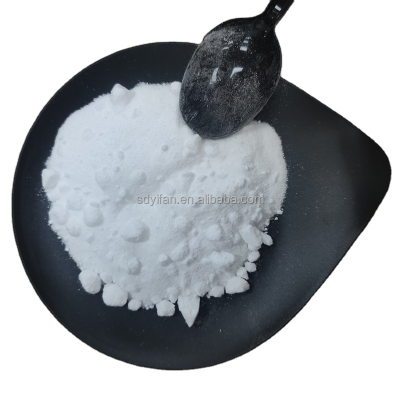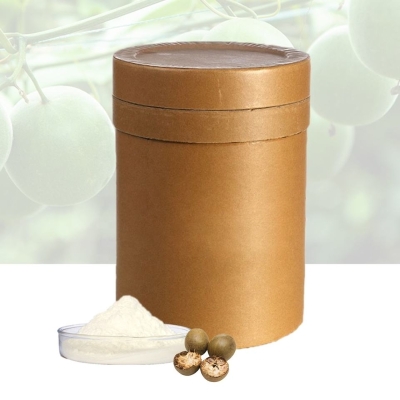-
Categories
-
Pharmaceutical Intermediates
-
Active Pharmaceutical Ingredients
-
Food Additives
- Industrial Coatings
- Agrochemicals
- Dyes and Pigments
- Surfactant
- Flavors and Fragrances
- Chemical Reagents
- Catalyst and Auxiliary
- Natural Products
- Inorganic Chemistry
-
Organic Chemistry
-
Biochemical Engineering
- Analytical Chemistry
- Cosmetic Ingredient
-
Pharmaceutical Intermediates
Promotion
ECHEMI Mall
Wholesale
Weekly Price
Exhibition
News
-
Trade Service
In recent years, a large number of scientific researchers have invested in the development of self-healing elastic materials, and their application scenarios are mainly aimed at intelligent flexible devices, electronic skins, and energy conversion devices
.
These applications do not have high requirements on the mechanical properties of the carrier material, such as tensile strength, toughness, elastic recovery and other indicators, and can be achieved by rational use of dynamic covalent bonds, non-covalent bonds and cross-linking network regulation
.
However, the application of the concept of self-healing elastic materials is not limited to the above-mentioned fields.
It can also play a special role in application scenarios such as anti-scratch of the car body, anti-puncture-proof of tubeless tires-preventing instantaneous loss of pressure, which requires the material to have high strength, The mechanical characteristics of high toughness, low modulus and large deformation resilience and rapid healing ability
.
The self-healing ability strongly depends on the exchange ability of the dynamic bond and the movement ability of the molecular chain, and the rigid chain segment and strong interaction help to increase the strength
.
The contradictory relationship between the two makes it difficult to develop elastic materials with high strength and rapid self-healing
.
? To solve this problem, the team of Professor Wei Liuhe and Associate Researcher Li Yuhan of Zhengzhou University used the dynamic oxime urethane bond formed by 2,4-pentanedione dioxime (PDO) and isophorone diisocyanate (IPDI) to give Self-healing ability, by changing the ratio of the two to adjust the phase content of the loosely piled hard segment to induce the strain-induced crystallization (SIC) of the polytetrahydrofuran ether glycol (PTMEG) soft segment to achieve simultaneous reinforcement and toughness
.
Thanks to this, the contradiction between self-healing ability and enhanced toughness can be avoided, and engineered tensile strength (29.
5 MPa) and toughness (124.
9 MJ/m3), balanced self-healing efficiency (70 degrees after 12 hours) are obtained.
The tensile strength, elongation at break and toughness are calculated to be greater than 95%), quick repair of scratches or splicing interfaces (60 seconds of blower hot air assistance), and the material has excellent transparency and puncture resistance (puncture energy 625 mJ) and large deformation resilience (400%)
.
The material can be sprayed or brushed to form a car body protective layer and a tubeless tire sealing layer.
Application evaluation shows that it has good applicability
.
Related research was published in Chemical Engineering Journal (doi: 10.
1016/j.
cej.
2020.
128300) as "Engineered self-healable elastomer with giant strength and toughness via phase regulation and mechano-responsive self-reinforcing"
.
? Figure 1.
Synthetic route, performance comparison and display of polyoxime urethane elastomer
.
? In this article, we compared the comprehensive performance of the three hard segments around the dynamic oxime urethane bond
.
As shown in Figure 1, elastomers based on PDO and IPDI have obvious strain hardening, while elastomers based on dimethylglyoxime (DMG) and/or 4,4'-methylene phenyl diisocyanate ( MDI) The strain hardening of elastomers is relatively weak and appears early
.
Although there are previous literature reports using DMG to construct dynamic oxime urethane bonds to prepare high-strength self-healing elastomers (J.
Mater.
Chem.
A? 2018 6, 18154-18164 and Adv.
Mater.
? 2019, 31 1901402), Its central symmetry structure makes the hard segment phases more compact, and the ability to dissipate energy during the stretching process is reduced.
As a result, the PTMEG soft segment chain undergoes unwinding, orientation, and enters the crystal lattice to form a limited number of straight chain crystals, and finally As a result, strain-induced crystallization is not obvious
.
For MDI, the rigidity of the benzene ring and the π-π stacking feature also make the hard segment phases densely packed, and the ability to induce strain crystallization is also weaker
.
PDO is inferior to DMG in structural symmetry, and combined with high steric hindrance IDPI can build a loosely stacked hard phase
.
During the stretching process, the hard segment can dissipate energy when subjected to an external force, and a certain degree of phase disintegration occurs, so that the soft segment can be fully unwound and rearranged into the crystal lattice to form an extended chain crystal, and the formed crystal acts as a new The physical cross-linking point can greatly enhance the ability to resist pulling force
.
Thanks to the idea of molecular design and hard segment phase regulation, the material has excellent balance of strength and toughness.
.
? Figure 2.
Tensile behavior of polyurethane elastomers, and characterization of strain-induced crystallization behavior
.
? In terms of healing ability, the traditional evaluation method is calculated by a single parameter, such as tensile strength and elongation at break
.
The elastomer of this system has obvious strain-induced crystallization behavior, and its tensile strength will be greatly increased in a small range.
Therefore, a single parameter, especially the elongation at break, will be calculated with a large deviation
.
For the first time in this study, the three parameters of tensile strength, elongation at break and toughness were used to comprehensively evaluate the self-healing ability of materials
.
As shown in Figure 2, the three types of self-healing efficiency at room temperature have a large deviation, because the room temperature is not enough to stimulate the dynamics of the oxime urethane bond, and the hard phases repaired by hydrogen bond reconstruction are not enough to resist the stress to achieve strain hardening.
.
The three types of self-healing efficiency at 70 degrees all reached more than 95%, objectively showing excellent self-healing ability
.
Observation under the microscope shows that the scratches or splicing interface can be completely healed after 60 seconds of hot air treatment with a hair dryer
.
? By adjusting the hard segment content based on PDO and IPDI elastomers, it can be found that the self-healing ability decreases to a certain extent as the hard segment content increases
.
Comparing the self-healing efficiency, strong tensile strength and toughness of the three types of elastomers, PDO-IP2.
5 has the best comprehensive performance
.
? Figure 3 Application evaluation of polyoxime urethane elastomer applied to car body protective layer and tubeless tire sealing layer
.
? The elastomer in this study is a linear polyoxime urethane, which can be formed by thermoplastic molding, solution spraying or brushing
.
Studies have found that when PDO-2.
5 is sprayed on the glass substrate or brushed on the inner wall of the tubeless tube, the polymer layer exhibits excellent adhesion
.
The scratches made by the sharp blade can be completely healed and restored to a smooth surface after 5 minutes of hot air treatment
.
The steel nail pierced the tubeless tyre without sealing layer.
After the lining was punctured, the tyre lost pressure instantly
.
If the tires of a car driving at high speed are accidentally pierced into sharp objects, if the tire pressure drops instantly, traffic accidents caused by driving out of control are very likely to occur
.
If the inner wall of the tubeless tire is coated with a puncture-resistant sealing layer, it can effectively avoid instantaneous pressure loss
.
At present, only high-end cars have coated tubeless tires with a sealing layer, and this type of sealing layer is a polyolefin elastomer, which does not have the ability to repair perforations.
Once the sealing layer is punctured, the expensive tires are scrapped
.
In contrast, the polyoxime urethane of this system has superiority as a sealing layer
.
It can not only effectively resist the loss of pressure due to puncture, but also will not lose pressure even if it is perforated.
After the puncture is repaired by hot air, the tire can maintain a relatively constant tire pressure after it is inflated again
.
? The first author of the paper is Dr.
Liu Xingjiang from the School of Chemistry, Zhengzhou University, and the co-corresponding authors are Professor Wei Liuhe and Associate Researcher Li Yuhan of the School of Chemistry, Zhengzhou University
.
Thanks to the National Natural Science Foundation of China, China Postdoctoral Science Foundation, Zhengzhou Collaborative Innovation Major Project and Zhengzhou Key Laboratory of Elastic Sealing Materials for their strong support for this work!
.
These applications do not have high requirements on the mechanical properties of the carrier material, such as tensile strength, toughness, elastic recovery and other indicators, and can be achieved by rational use of dynamic covalent bonds, non-covalent bonds and cross-linking network regulation
.
However, the application of the concept of self-healing elastic materials is not limited to the above-mentioned fields.
It can also play a special role in application scenarios such as anti-scratch of the car body, anti-puncture-proof of tubeless tires-preventing instantaneous loss of pressure, which requires the material to have high strength, The mechanical characteristics of high toughness, low modulus and large deformation resilience and rapid healing ability
.
The self-healing ability strongly depends on the exchange ability of the dynamic bond and the movement ability of the molecular chain, and the rigid chain segment and strong interaction help to increase the strength
.
The contradictory relationship between the two makes it difficult to develop elastic materials with high strength and rapid self-healing
.
? To solve this problem, the team of Professor Wei Liuhe and Associate Researcher Li Yuhan of Zhengzhou University used the dynamic oxime urethane bond formed by 2,4-pentanedione dioxime (PDO) and isophorone diisocyanate (IPDI) to give Self-healing ability, by changing the ratio of the two to adjust the phase content of the loosely piled hard segment to induce the strain-induced crystallization (SIC) of the polytetrahydrofuran ether glycol (PTMEG) soft segment to achieve simultaneous reinforcement and toughness
.
Thanks to this, the contradiction between self-healing ability and enhanced toughness can be avoided, and engineered tensile strength (29.
5 MPa) and toughness (124.
9 MJ/m3), balanced self-healing efficiency (70 degrees after 12 hours) are obtained.
The tensile strength, elongation at break and toughness are calculated to be greater than 95%), quick repair of scratches or splicing interfaces (60 seconds of blower hot air assistance), and the material has excellent transparency and puncture resistance (puncture energy 625 mJ) and large deformation resilience (400%)
.
The material can be sprayed or brushed to form a car body protective layer and a tubeless tire sealing layer.
Application evaluation shows that it has good applicability
.
Related research was published in Chemical Engineering Journal (doi: 10.
1016/j.
cej.
2020.
128300) as "Engineered self-healable elastomer with giant strength and toughness via phase regulation and mechano-responsive self-reinforcing"
.
? Figure 1.
Synthetic route, performance comparison and display of polyoxime urethane elastomer
.
? In this article, we compared the comprehensive performance of the three hard segments around the dynamic oxime urethane bond
.
As shown in Figure 1, elastomers based on PDO and IPDI have obvious strain hardening, while elastomers based on dimethylglyoxime (DMG) and/or 4,4'-methylene phenyl diisocyanate ( MDI) The strain hardening of elastomers is relatively weak and appears early
.
Although there are previous literature reports using DMG to construct dynamic oxime urethane bonds to prepare high-strength self-healing elastomers (J.
Mater.
Chem.
A? 2018 6, 18154-18164 and Adv.
Mater.
? 2019, 31 1901402), Its central symmetry structure makes the hard segment phases more compact, and the ability to dissipate energy during the stretching process is reduced.
As a result, the PTMEG soft segment chain undergoes unwinding, orientation, and enters the crystal lattice to form a limited number of straight chain crystals, and finally As a result, strain-induced crystallization is not obvious
.
For MDI, the rigidity of the benzene ring and the π-π stacking feature also make the hard segment phases densely packed, and the ability to induce strain crystallization is also weaker
.
PDO is inferior to DMG in structural symmetry, and combined with high steric hindrance IDPI can build a loosely stacked hard phase
.
During the stretching process, the hard segment can dissipate energy when subjected to an external force, and a certain degree of phase disintegration occurs, so that the soft segment can be fully unwound and rearranged into the crystal lattice to form an extended chain crystal, and the formed crystal acts as a new The physical cross-linking point can greatly enhance the ability to resist pulling force
.
Thanks to the idea of molecular design and hard segment phase regulation, the material has excellent balance of strength and toughness.
.
? Figure 2.
Tensile behavior of polyurethane elastomers, and characterization of strain-induced crystallization behavior
.
? In terms of healing ability, the traditional evaluation method is calculated by a single parameter, such as tensile strength and elongation at break
.
The elastomer of this system has obvious strain-induced crystallization behavior, and its tensile strength will be greatly increased in a small range.
Therefore, a single parameter, especially the elongation at break, will be calculated with a large deviation
.
For the first time in this study, the three parameters of tensile strength, elongation at break and toughness were used to comprehensively evaluate the self-healing ability of materials
.
As shown in Figure 2, the three types of self-healing efficiency at room temperature have a large deviation, because the room temperature is not enough to stimulate the dynamics of the oxime urethane bond, and the hard phases repaired by hydrogen bond reconstruction are not enough to resist the stress to achieve strain hardening.
.
The three types of self-healing efficiency at 70 degrees all reached more than 95%, objectively showing excellent self-healing ability
.
Observation under the microscope shows that the scratches or splicing interface can be completely healed after 60 seconds of hot air treatment with a hair dryer
.
? By adjusting the hard segment content based on PDO and IPDI elastomers, it can be found that the self-healing ability decreases to a certain extent as the hard segment content increases
.
Comparing the self-healing efficiency, strong tensile strength and toughness of the three types of elastomers, PDO-IP2.
5 has the best comprehensive performance
.
? Figure 3 Application evaluation of polyoxime urethane elastomer applied to car body protective layer and tubeless tire sealing layer
.
? The elastomer in this study is a linear polyoxime urethane, which can be formed by thermoplastic molding, solution spraying or brushing
.
Studies have found that when PDO-2.
5 is sprayed on the glass substrate or brushed on the inner wall of the tubeless tube, the polymer layer exhibits excellent adhesion
.
The scratches made by the sharp blade can be completely healed and restored to a smooth surface after 5 minutes of hot air treatment
.
The steel nail pierced the tubeless tyre without sealing layer.
After the lining was punctured, the tyre lost pressure instantly
.
If the tires of a car driving at high speed are accidentally pierced into sharp objects, if the tire pressure drops instantly, traffic accidents caused by driving out of control are very likely to occur
.
If the inner wall of the tubeless tire is coated with a puncture-resistant sealing layer, it can effectively avoid instantaneous pressure loss
.
At present, only high-end cars have coated tubeless tires with a sealing layer, and this type of sealing layer is a polyolefin elastomer, which does not have the ability to repair perforations.
Once the sealing layer is punctured, the expensive tires are scrapped
.
In contrast, the polyoxime urethane of this system has superiority as a sealing layer
.
It can not only effectively resist the loss of pressure due to puncture, but also will not lose pressure even if it is perforated.
After the puncture is repaired by hot air, the tire can maintain a relatively constant tire pressure after it is inflated again
.
? The first author of the paper is Dr.
Liu Xingjiang from the School of Chemistry, Zhengzhou University, and the co-corresponding authors are Professor Wei Liuhe and Associate Researcher Li Yuhan of the School of Chemistry, Zhengzhou University
.
Thanks to the National Natural Science Foundation of China, China Postdoctoral Science Foundation, Zhengzhou Collaborative Innovation Major Project and Zhengzhou Key Laboratory of Elastic Sealing Materials for their strong support for this work!







